As a seasoned expert in the field of press brake operations, I understand the challenges that come with achieving consistent bends. In this article, I will share my insights and provide valuable tips on how to improve bend consistency in press brake operations. From proper machine setup to selecting the right tooling, there are several factors that contribute to the quality and accuracy of bends. By implementing the strategies outlined in this article, you can enhance your press brake operations and achieve more consistent results.
Consistency is key in press brake operations, as even the slightest variation can lead to costly errors and rework. In this article, I will delve into the importance of bend consistency and discuss the impact it has on overall productivity and product quality. By understanding the factors that affect bend consistency, such as material properties and machine settings, you can make informed decisions to optimize your press brake operations. With a focus on precision and repeatability, you can minimize scrap and maximize efficiency.
Achieving bend consistency in press brake operations requires a combination of technical expertise and attention to detail. In this article, I will walk you through the step-by-step process of improving bend consistency, from analyzing part drawings to fine-tuning machine parameters. By implementing best practices and utilizing advanced tools and techniques, you can ensure that each bend meets the desired specifications. With a commitment to continuous improvement, you can elevate the performance of your press brake operations and deliver superior results.
Bend consistency refers to the ability to consistently achieve accurate and high-quality bends in press brake operations. It is a crucial aspect of the bending process, as even slight variations can result in costly errors and rework. Consistency is essential for ensuring that each bend meets the required specifications and maintains the desired shape and angle.
In press brake operations, bend consistency is influenced by various factors, including the properties of the material being bent and the machine settings. Different materials have different properties, such as elasticity and hardness, which affect how they respond to bending. The machine settings, such as the tonnage, stroke length, and speed, also play a significant role in determining the bend consistency.
Achieving consistent bends requires careful analysis of part drawings and the adjustment of machine parameters to match the desired specifications. By understanding the material properties and the capabilities of the press brake machine, operators can fine-tune the settings to achieve the desired bend consistency.
Improving bend consistency not only enhances the overall quality of the final product but also increases productivity and reduces the need for rework. With consistent bends, parts can be fabricated accurately and efficiently, reducing waste and saving valuable time and resources.
In the next section, we will discuss some practical steps that can be taken to improve bend consistency in press brake operations.
Consistency is a critical factor in achieving accurate and high-quality bends in press brake operations. It ensures that each bend meets the required specifications and maintains the desired shape and angle.
Inaccurate or inconsistent bends can lead to costly errors and rework. Even slight variations can result in parts that do not fit together properly or fail to perform their intended function. This can lead to delays in production, increased scrap rates, and additional costs.
Furthermore, bend consistency directly impacts the overall quality of the final product. It contributes to the structural integrity and functionality of the fabricated parts. Consistent bends provide a reliable and predictable outcome, increasing customer satisfaction and reducing the likelihood of product failures or recalls.
When it comes to achieving bend consistency in press brake operations, there are several factors that can have a significant impact. By understanding and addressing these factors, operators can improve the overall quality and accuracy of their bends. Here are some key factors to consider:
1. Material Properties: The type and properties of the material being bent can greatly affect bend consistency. Different materials have different levels of elasticity, hardness, and ductility, which can influence how they respond to the bending process. It’s important to have a good understanding of the material being used and adjust machine settings accordingly to achieve consistent bends.
2. Machine Settings: The settings on the press brake machine play a crucial role in achieving bend consistency. Factors such as the clamping force, stroke length, and bending speed can all impact the accuracy and repeatability of bends. It’s important to calibrate and fine-tune these settings based on the specific requirements of the job to ensure consistent results.
3. Tooling: The selection and condition of the tooling used in the bending process can also affect bend consistency. Worn or damaged tooling can lead to inaccuracies and variations in the bends. Regular inspection and maintenance of the tooling is essential to ensure consistent and high-quality bends.
4. Operator Skill and Technique: The skill and technique of the operator can make a significant difference in bend consistency. Proper training and experience can help operators understand how to manipulate the machine and tooling to achieve the desired bends. Consistent and controlled movements, along with a good understanding of the material and machine, are key to achieving consistent results.
By considering these factors and making the necessary adjustments, press brake operators can improve bend consistency and deliver superior quality bends. It’s important to analyze part drawings, fine-tune machine parameters, and ensure proper tooling and operator technique to optimize the bending process.
To achieve consistent bends in press brake operations, there are several important tips to keep in mind. By implementing these strategies, operators can enhance the accuracy and quality of their fabricated parts. Here are some key tips to consider:
By following these tips, press brake operators can improve bend consistency and deliver high-quality fabricated parts. Remember to consider factors such as machine setup, tooling selection, material properties, operator skill, and ongoing maintenance to optimize the bending process.
As an expert in the field, I understand the importance of proper training and education for press brake operators. In order to achieve bend consistency in press brake operations, it is crucial to invest in the development of your operators. Here are a few key points to consider:
By investing in training and education for press brake operators, you are investing in the success and efficiency of your bending operations. Remember, skilled and knowledgeable operators are key to achieving bend consistency and delivering high-quality fabricated parts.
Using the right tooling and equipment is essential for achieving consistent bends in press brake operations. Here are a few key points to consider:
By utilizing proper tooling and equipment, press brake operators can achieve consistent and high-quality bends. The next section will explore another crucial factor in improving bend consistency: operator training and education.
Regular maintenance of the press brake machine is essential for achieving consistent bend quality. Here are some key points to consider:
1. Proper Lubrication: Regularly lubricating the moving parts of the press brake machine helps reduce friction and wear. This ensures smooth operation and extends the lifespan of the machine.
2. Machine Calibration: Regular calibration of the press brake machine is crucial for maintaining bend accuracy. Calibrating the machine ensures that it is operating within the specified tolerances, resulting in consistent and precise bends.
3. Tooling Maintenance: The condition of the tooling used in the press brake machine plays a significant role in bend consistency. Regularly inspecting and maintaining the tooling helps prevent wear and damage, ensuring accurate bends.
4. Safety Features: Checking and maintaining the safety features of the press brake machine is vital for the well-being of the operators and the overall efficiency of the operation. Safety features such as interlocks, emergency stop buttons, and light curtains should be regularly inspected and tested to ensure they are functioning properly.
5. Regular Inspections: Conducting routine inspections of the press brake machine helps identify potential issues before they escalate. This includes checking for loose or worn-out parts, damaged wiring, and any abnormalities in the machine’s performance.
By prioritizing regular maintenance of the press brake machine, operators can ensure consistent bend quality and minimize the risk of unexpected breakdowns. Proper lubrication, machine calibration, tooling maintenance, safety feature checks, and regular inspections are all essential for maximizing the efficiency and effectiveness of press brake operations.
Ensuring consistent bend quality in press brake operations requires effective quality control and measurement techniques. By implementing these techniques, operators can identify any deviations from desired specifications and make necessary adjustments to maintain optimal bend consistency. Here are some important quality control and measurement techniques to consider:
1. First-piece inspection: Conducting a thorough inspection of the first bend produced in a batch is essential. This initial inspection serves as a benchmark for the rest of the bends and helps identify any potential issues early on.
2. Regular measurements: Regularly measuring the dimensions of the bends is crucial for monitoring and maintaining consistency. This can be done using tools such as calipers, micrometers, or laser measurement systems.
3. Statistical process control (SPC): Implementing SPC techniques allows operators to monitor the process and detect any variations or trends that may affect bend consistency. By analyzing statistical data, operators can identify patterns and take corrective actions to ensure consistent bends.
4. Gauge R&R analysis: Conducting a Gauge R&R (Repeatability and Reproducibility) analysis helps assess the reliability and consistency of the measuring instruments used in the process. This analysis helps identify any sources of measurement error and ensures accurate and consistent measurements.
5. Documentation and record-keeping: Maintaining detailed documentation and records of each bend produced is essential for quality control. This documentation allows operators to track any variations, identify trends, and make necessary adjustments to maintain consistent bend quality.
By implementing these quality control and measurement techniques, press brake operators can significantly improve bend consistency and ensure high-quality results. These techniques provide operators with the necessary tools and insights to identify and address any issues promptly, resulting in improved efficiency and customer satisfaction.
Proper training and education are crucial for achieving consistent bend quality in press brake operations. By providing comprehensive initial training and ongoing education, operators can enhance their skills and adaptability. Cross-training opportunities can further broaden their knowledge and expertise.
To foster a culture of continuous improvement, it is important to encourage open communication and provide constructive feedback. This creates an environment where operators can learn from their mistakes and constantly strive for better results.
Regular maintenance of the press brake machine is essential. This includes lubrication, machine calibration, tooling maintenance, safety feature checks, and regular inspections. By ensuring that the machine is in optimal condition, operators can achieve consistent and high-quality bends.
Effective quality control and measurement techniques are also crucial. First-piece inspection, regular measurements, statistical process control (SPC), Gauge R&R analysis, and documentation and record-keeping all contribute to achieving consistent bend quality.
By implementing these strategies, press brake operators can significantly improve bend consistency and ensure high-quality results. With proper training, ongoing education, regular maintenance, and effective quality control, press brake operations can achieve the desired level of bend consistency.


